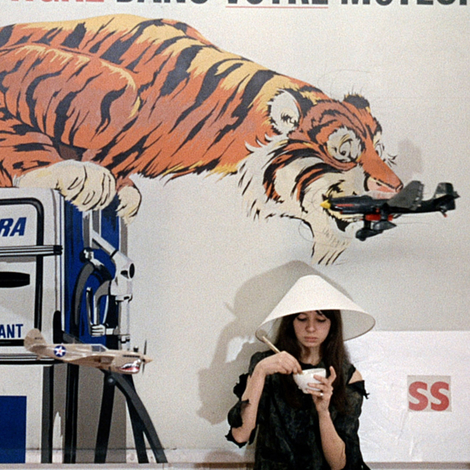I met Mario Vargas Llosa in the late 1980s. I had been commissioned to adapt his novel Aunt Julia and the Scriptwriter as a movie for a Hollywood mini-major called Cinecom. By good fortune we had a mutual friend, the writer Nicholas Shakespeare, and it was Nicholas who introduced us. Mario invited me to dinner — he had a flat in Knightsbridge, London, in Montpelier Square, at the time — and was very excited about the potential film of his novel. I was a fan and Aunt Julia was my favorite among his many novels. But I had bad news to impart.
Aunt Julia and the Scriptwriter is both very autobiographical and very fantastical. Set in 1950s Lima, Peru, it follows the love story between Mario, the novel’s young protagonist, and his aunt Julia. Their story parallels Vargas Llosa’s affair with Julia Urquidi, a woman 13 years his senior whom he eventually married. The story is interspersed, however, with a dozen or so crazily surreal soap operas, written by the eponymous scriptwriter, one Pedro Camacho.

The bad news I was bearing was that the film adaptation of this, which takes place in Lima, wasn’t going to be set there. It had to be Americanized. Also, there was no way the various wild soap operas could be included for budgetary reasons. I had come up with a compromise that was acceptable to the producers and the studio: the story would now be set in New Orleans — as close to Lima as the US could provide, I reckoned — and instead of many soap operas there would be just the one. Mario took the news in. “I think you should go for a bold adaptation,” he said. “Very bold.”
As I came to know him during the filming of Aunt Julia I realized this generous reaction was typical of the man. This was long before he won the Nobel Prize for literature but he already radiated a kind of literary gravitas — his reputation as one of the key figures of South American literature was secure and widely recognized. Other adjectives were appropriate: handsome, urbane, cultured, sophisticated, kind. He spoke fluent English and French. Our acquaintanceship survived another blow when Cinecom decided to retitle the film in the US as Tune in Tomorrow. They thought they had a hit on their hands and the original title was deemed too “arthouse”. I begged them to reconsider, to no avail. This time Mario was furious and pulled out of a publicity tour that he and I were meant to be doing together to promote the movie.

In fact the film, directed by Jon Amiel, had almost unanimous rave reviews when it came out in 1990 — the cast included the young Keanu Reeves, Barbara Hershey and Peter Falk — but it didn’t fare well commercially. The only good news was that European distributors wisely reverted to the original title. Mario liked the film very much, happy with my “bold” adaptation. It remains the only novel of his to have been filmed in English.
We continued to see each other when our paths crossed. By now, the beginning of the 1990s, Mario was an eminent public intellectual as well as an internationally successful novelist and he decided — much to the dismay of many of his friends — to run for the presidency of Peru in 1990 on a ticket of right-wing liberalism. He lost to Alberto Fujimori and, although Mario was profoundly disappointed, it was probably a blessing in disguise. Had he won there would have been far fewer novels and probably no Nobel.

The body of work is hugely extensive — he was a powerhouse of literary energy. There are some 21 novels, not to mention non-fiction and journalism. For many years he wrote a weekly column in El Pais that was often controversial and widely read because of it. He reminds me, in this regard, of Anthony Burgess, similarly prolific, eclectic and uncategorizable. I have read a lot of Mario’s novels and they cover many genres — comedy, satire, erotica, historical epics, political fables, fictionalized biography.
My favorite remains Aunt Julia, for obvious reasons, but others I admire are Captain Pantoja and the Special Service, The Feast of the Goat, The War at the End of the World and Who Killed Palomino Molero? This variety and astonishing range in his work sets him apart from his great South American rival, the Colombian writer Gabriel García Márquez, whose unique form of magic realism made him a global phenomenon in the 1970s and won him the Nobel in 1982. The two were friends but then drifted apart over political differences. Mario notoriously punched Márquez in the face in a cinema in Mexico City in 1976, blackening his eye. There was no going back after that.

So, Vargas Llosa or Márquez? Both Nobelized. That is the abiding question in the literary parlor game of who’s the greatest. The house of fiction is big enough to contain them both, of course, but in comparing the two of them I’m reminded of the adage coined by the ancient Greek poet Archilochus. Archilochus said, gnomically, that: “A fox knows many things; but a hedgehog knows one big thing.” It’s an interesting way of categorizing artists — fox or hedgehog? Márquez is a clearly a hedgehog — and Mario Vargas Llosa is the undisputed fox of South American and Spanish literature.
Mario Vargas Llosa was born on March 28, 1936. He died on April 13
William Boyd is the author of several books and plays, including The Romantic

